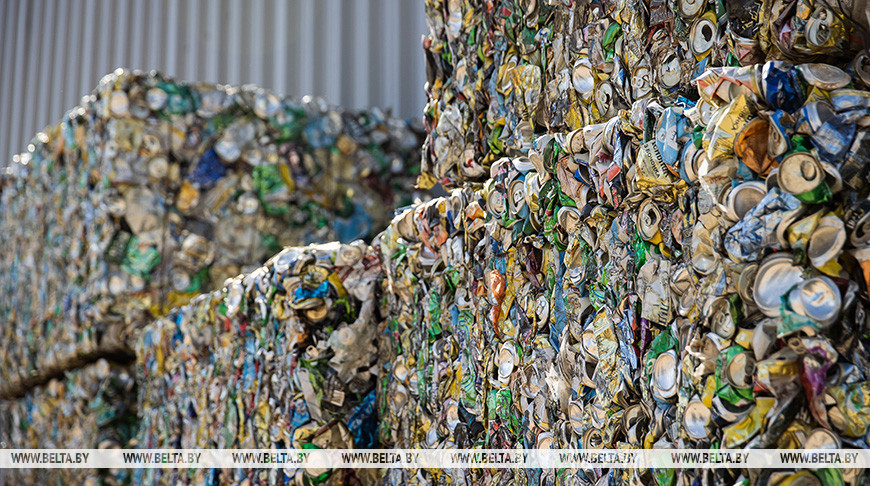
An archive photo
MINSK, 13 November (BelTA) – Around 900 types of waste are recycled in Belarus, Olga Sazonova, Head of the Waste Management Department at the Belarusian Ministry of Natural Resources and Environmental Protection, said during a press conference, BelTA has learned.
Olga Sazonova noted that the National Security Concept, approved by the Belarusian People’s Congress in April 2024, identifies a high level of waste generation as one of the internal sources of threats to national security, and the elasticity coefficient of waste generation and GDP growth is recognized as one of the key indicators of national security status. “The National Sustainable Development Strategy prioritizes ensuring environmental security, transitioning to rational models of production and consumption, and moving towards a circular economy. Its distinctive feature is a circular system of the use of all types of raw materials and fuel and energy resources. In this context, ensuring the maximum utilization of waste is paramount. This has been defined as one of the priorities for Belarus’ sustainable development,” she said.
According to her, the utilization rate of production waste (excluding high-volume types) at the end of 2024 was about 90%. When including high-volume types (from the production of potash and phosphate fertilizers), the rate exceeds 32%. “There is a high utilization rate for traditional types of secondary material resources: glass, plastic, paper. Last year, the utilization rate of municipal solid waste reached about 40%,” Olga Sazonova pointed out. “The register of waste processing facilities includes over 1,500 sites that recycle around 900 types of waste.”
In August 2025, Belarus approved a strategy for the management of production and consumption waste, aiming to achieve a waste utilization rate of at least 90% by 2040. This goal is planned to be reached in three stages. The first stage lasts until 2030. By that year, the utilization rate of municipal solid waste must reach 70%. For sewage sludge, the utilization rate should be around 60% by 2030. Measures have already been taken to implement the strategy.
“The State Standardization Committee has approved a program for developing state standards for packaging requirements to ensure its recyclability after loss of consumer properties. The document, which covers the period until 2029, includes the development of 22 state standards harmonized with international European standards,” Olga Sazonova stated.













